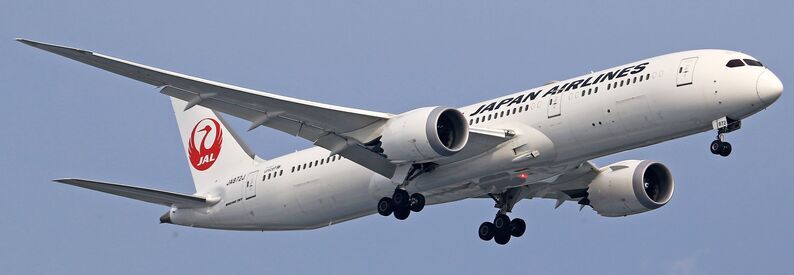Japan Airlines Kansai–Shanghai Flight Uses Mass-Produced SAF

Japan Airlines has taken a major step toward aviation decarbonization by operating flight JL891 from Kansai International Airport to Shanghai Pudong on sustainable aviation fuel mass-produced from waste cooking oil. Departing Kansai at 10:13 on May 1, 2025, the Boeing 787-8 Dreamliner completed the two-hour 48-minute journey, touching down in Shanghai at 12:01 local time. This flight marks the launch of a continuous domestic SAF supply chain, with fuel produced by Saffaire Sky Energy in Osaka using recycled oil collected from households and businesses across Japan.
The Kansai–Shanghai service is part of JAL’s Fly to Fry project, an ambitious initiative that aims to power the airline’s entire network with SAF derived from home-grown resources. While JAL has trialed cooking-oil–based fuel previously, this operation is the first to integrate large-scale production and supply, ensuring that each aircraft can consistently refuel with domestic SAF. By turning used frying oil into jet fuel, the project not only reduces greenhouse gas emissions but also creates a circular economy that benefits local communities and waste-management systems.
In announcing the achievement, JAL highlighted the environmental impact of switching to SAF. When compared to conventional jet kerosene, waste-cooking-oil SAF can cut lifecycle carbon emissions by up to 80 percent. As aviation accounts for around 2 to 3 percent of global CO₂ emissions, scaling up SAF use is essential to meeting net-zero targets by mid-century. Japanese regulators have set a goal of incorporating 10 percent SAF into all domestic flights by 2030, and the Fly to Fry project is positioned to help JAL exceed that threshold.
Looking ahead, Japan Airlines plans to deepen partnerships with municipalities, food service operators and recycling firms to expand the collection network for cooking oil. By streamlining logistics from collection points to the Osaka production facility, JAL and Saffaire Sky Energy aim to boost monthly SAF output from a few hundred thousand liters to several million liters by 2028. Concurrently, JAL will upgrade refueling stations at key hubs such as Tokyo Haneda and Narita to handle higher SAF blends without disrupting normal operations.
Beyond fuel production, the Buoyant future of the Fly to Fry project includes training staff on SAF handling, certifying additional aircraft types for higher SAF mixes and sharing best practices with global industry partners. JAL is also exploring collaborations with bio-refineries that convert forestry residues and industrial off-gas into synthetic fuels, further diversifying its low-carbon feedstock portfolio.
Customer engagement forms another pillar of the initiative. JAL intends to offer special “Eco-Flight” branding on SAF-powered services, allowing passengers to book and contribute to their carbon offsets. Educational content on the airline’s digital channels will explain the lifecycle of cooking-oil SAF, from collection at neighborhood restaurants to combustion in jet engines, fostering greater awareness of sustainable travel choices.
As the first major carrier to establish a domestically mass-produced SAF supply chain, Japan Airlines positions itself at the forefront of Asian aviation’s green transition. The Kansai–Shanghai flight is more than a milestone; it demonstrates how carriers can leverage local resources, public-private partnerships and innovative recycling technologies to decarbonize operations. With the Fly to Fry project set to expand in scope and scale, JAL is charting a course toward a sustainable future in which air travel remains viable and responsible for generations to come.
Related News : https://airguide.info/?s=Japan+Airlines
